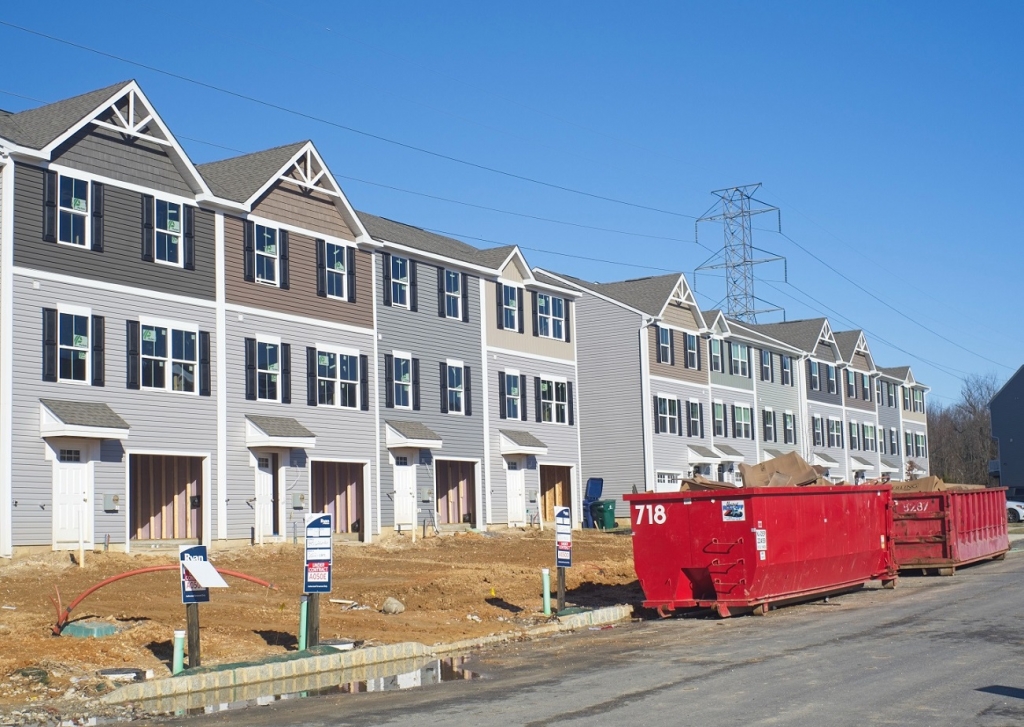What is Biodiversity Net Gain?

Nat Duffus and Sophus zu Ermgassen explain.
On February 12th, England’s ambitious new environmental policy, Biodiversity Net Gain (BNG) went live. Underpinned by the Environment Act, this policy lays out the mandatory requirement for new developments to provide a 10% net gain in biodiversity, maintained for at least 30 years. For now, this applies to almost all developments, and will become mandatory for small sites from April 2024, and for Nationally Significant Infrastructure Projects (NSIPs) from November 2025.
The ambition is that instead of driving biodiversity loss, development will now contribute to biodiversity recovery, from housing developments to large solar farms, and to road and rail construction. But what does providing a ‘biodiversity net gain’ mean?
How is Biodiversity Net Gain achieved?
The policy is designed so that the improvement to biodiversity is measurable, using the statutory biodiversity metric. This is a calculation tool, which assigns numerical values called ‘units’ to habitats based on their size, type, and ecological condition. Before development occurs, developers will need to take stock of the units provided by their habitats on-site. Post-development, there will need to be 10% more units than there was to begin with. This is achieved by following a mitigation hierarchy, whereby harms to the habitats are avoided and minimised as much as possible, and harms that do occur will need to be compensated for. This can be done by improving the quality of the habitats remaining and creating new habitats.
It is preferred in the policy that the creation of new habitats occurs in the same place as the impact to biodiversity. This means that it is hoped that under BNG there will be higher levels of greenspace within developments, provided by grassland, ponds, hedgerows, and other natural habitats for wildlife. When on-site habitats are not enough to meet the 10% requirement then off-site gains (offsets) can be purchased.
It is hoped that the developers’ demand for offsets will drive investment into landowners and habitat banks to do large nature recovery projects. This could allow, for example, the creation of wildflower meadows to offset the environmental harms caused by a new housing development.
Researchers have learned a lot about the outcomes of BNG from studying councils which adopted the commitment early. Based on this experience, academics and ecologists are still concerned about several key gaps in the policy which limit the ability of BNG to fulfil its ambitions.
Is BNG delivering for wildlife?
 A key concern from academics is that the metric used to score biodiversity may not work in the best interest of wildlife – particularly, for insects, an important but declining component of biodiversity. Grasslands which have nettles, ragwort, thistles, and diverse mosaics of scrub and bare earth support a wealth of rich insect biodiversity. Under BNG, these habitats are penalised in favour of tidy grasslands which may have plenty of flowers but lack the other diverse habitat components necessary to sustain flourishing insect populations.
A key concern from academics is that the metric used to score biodiversity may not work in the best interest of wildlife – particularly, for insects, an important but declining component of biodiversity. Grasslands which have nettles, ragwort, thistles, and diverse mosaics of scrub and bare earth support a wealth of rich insect biodiversity. Under BNG, these habitats are penalised in favour of tidy grasslands which may have plenty of flowers but lack the other diverse habitat components necessary to sustain flourishing insect populations.
Not only will habitats potentially be of reduced quality to wildlife, but they will also be smaller, as recent research found that BNG was associated with a large reduction in the area of open greenspace. It was also found that the metric is so flexible that most large developments can meet their entire 10% BNG commitment within the development footprint. This reduces the demand for offsets, and the private investment that could be going into large nature recovery projects, supporting goals such as the 30 by 30 target.
How will BNG be enforced?
Another big risk that has been flagged by researchers is the fact that BNG allows for the trading of existing habitats for promised future habitats. For this trading to work, there needs to be high levels of monitoring and governance, to incentivise compliance with the policy.
Habitats promised on-site within the built environment are at particular risk, owing to the inability of existing planning enforcement mechanisms to tackle BNG non-compliance. Due to this gap, it was previously estimated that a quarter of habitat units delivered under BNG could be unmonitored and effectively unenforceable.
In response to these governance challenges, there has been an increase in the funding afforded to Local Planning Authorities (LPAs) in the run up to BNG and new requirements mean that ‘significant’ gains within the built environment will require a planning agreement. However, there remains significant concern as to whether LPAs are adequately resourced to monitor habitats over 30 years and act against noncompliance.
There are also challenges with securing some habitats within the built environment such as residential gardens and public use grasslands which count toward the BNG requirement. Both will be subject to high levels of use by people and pets, reducing their wildlife value. For gardens, it is not yet clear how their wildlife value will be maintained and not lost to artificial grass, decking, or concrete slabs.
Today is an exciting moment as one of the world’s most ambitious ecological compensation policies is launched. But it is important that we get the nuts and bolts of this policy right to ensure that we are delivering real benefits for biodiversity, and that gains are not just made on paper.
Watch an interview Nat took part in with Trisha Goddard on TalkTV here. Interview starts at 1.46
Originally published in ‘The Conversation’ here




